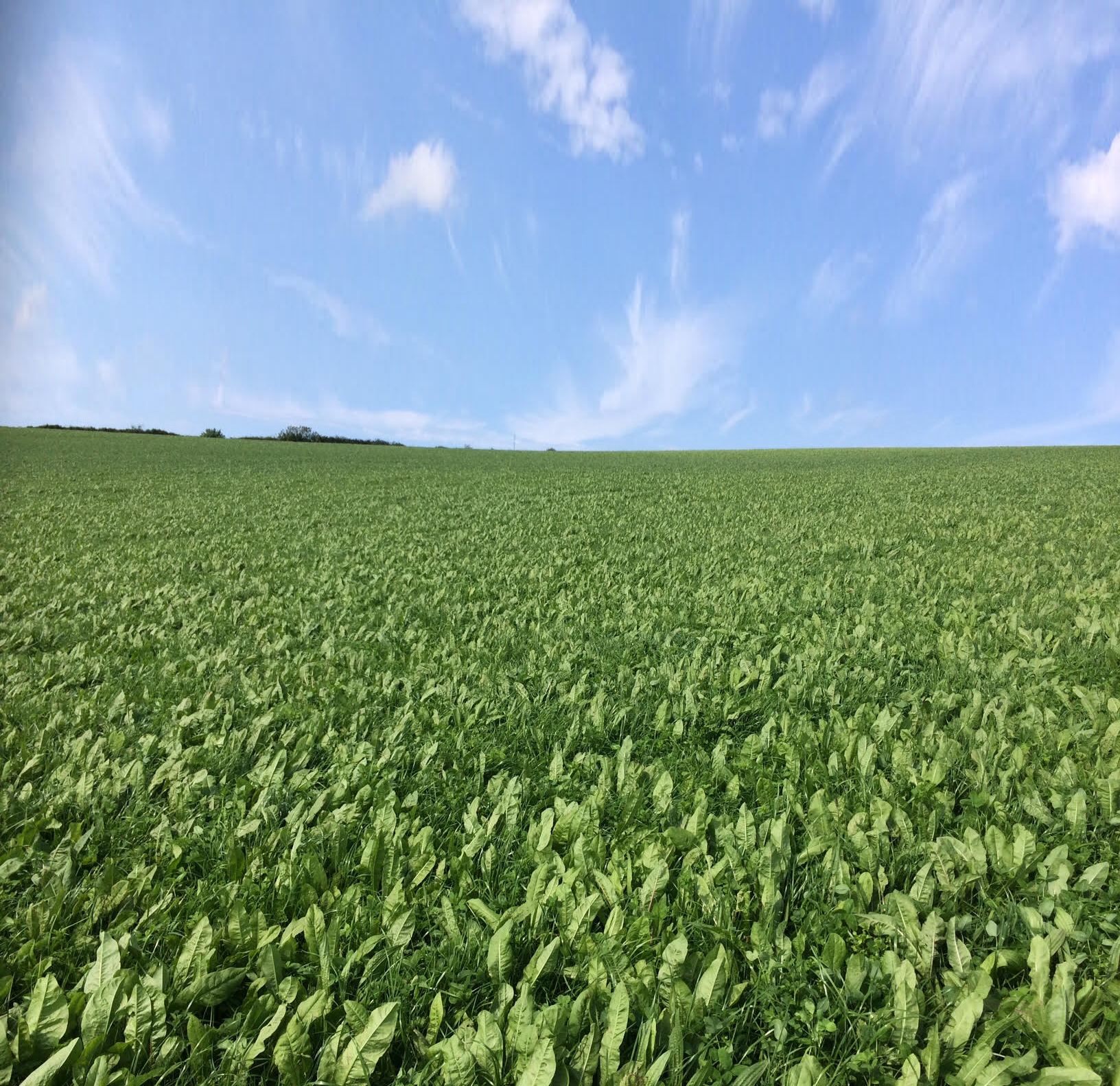

Though herbal leys are traditionally used as forage with regular movement of stock to keep on top of the growth, our Simple Herbal ley is also designed to be a great cutting ley.
Cutting leys naturally get less frequent management and produce a higher yield. You obviously don’t want to be cutting the ley every day - cutting leys are usually allowed to grow longer and bulkier to achieve a bigger yield. To achieve this, the mixture needs to be adapted to contain less fragile species. The more fragile species can survive in a grazing ley because the more dominant species are kept at bay, so there’s less competition. In a cutting regime, however, you are allowing the mixture to grow to a more advanced stage of maturity, so the more dominant species would smother fragile ones.
One of the primary benefits of herbal cutting leys is that the different species all grow to different heights, with different heading and rooting depths. This offers growth throughout the year, in different conditions and temperatures. Conversely, monoculture offers yields only in a narrow window during the growing season of the individual species.
First cut
The first cut can usually be taken 8-10 weeks after sowing.
What height should they be cut to?
The lower you cut, the slower the recovery but the higher the cut, the lower the yield. As a rule of thumb, cut no lower than 4 inches. Any lower and you’ll affect regrowth, but at around 4 inches height, you’ll still get a decent yield.
Yield
The typical yield is 40-45 T/ha/per year fresh weight, which is comparable to monoculture ryegrass. But remember with an herbal ley you are taking cuts all year round. It’s a win-win!
Establishment and Management
When it comes to establishment you need to bear in mind that a herbal ley contains small seeds which must not be buried to a great depth. A depth of 10mm is the maximum - any deeper and you’ll stunt the growth. Drilling is more convenient but needs to be at a shallow setting, into a fine seed bed. Broadcasting is preferable as it’s easier to shallow sow and gives an even coverage to help suppress weeds. The soil needs to be warm - 7-8 degrees and on the rise. Rolling is very important, especially if broadcasting, for soil-seed contact. April - September is the ideal time for establishing, but June - July can be too dry.
Weeds are not a problem with herbal leys, since all the space is taken up by the different plants. There’s no single canopy as there is in a monoculture and, if broadcast, drill rows are avoided, offering less space for weeds to take hold.
Convenience and Cost
A herbal cutting ley lasts 4 years or more, offering a long term saving compared to shorter term leys which must be replaced every 1-2 years. Herbal leys are also self sufficient, requiring no artificial fertiliser as the legumes fix nitrogen.
You can sample our Simple Herbal Ley on as little as an acre, which will cost you less than £70.
Date Posted: 20th August 2019



